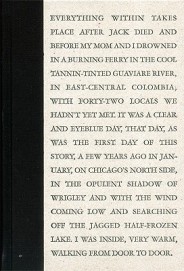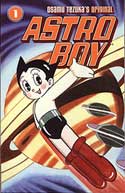 William T. Vollmann
William T. Vollmann
Viking ($40)
by Jason Picone
See William Vollmann. His tousled hair complements his still boyish face, which retains a youthful look despite the author's mustache and 40-something-years. Decked out in a well-worn windbreaker that he keeps on for the entire event, Vollmann reads from his latest novel, Argall, the third volume (though fourth to be published) in his acclaimed Seven Dreams series. He selects a passage seemingly at random, then reads it aloud with the diction of an elocutionist. Rarely pausing to look down, Vollmann's eyes move over his audience as he practically recites half a dozen pages about the early history of Captain John Smith. During the Q & A session, an audience member asks the author about his recent journalism assignments. Without a hint of self-consciousness, Vollmann casually mentions that he interviewed the Taliban last year. Inevitably, another individual asks the writer's opinion on current U.S.-Afghan relations; Vollmann replies with a careful, thoughtful answer, but he is reluctant to assert any expertise on the matter.
For a man who has shot off blanks during his readings in order to ensure the audience's attention, Vollmann appears to be an unassuming individual. His apparent modesty may have led him to take the moniker William the Blind, who is ostensibly the narrator of Argall. At first glance, the legendary story at the heart of the Third Dream—the relationship of John Smith and Pocahontas—may appear to be an odd subject for a seven-hundred-page novel, but the instability of the Virginia colony and the role of these two historical figures in its survival is far from straightforward. The intriguing mix of political maneuvering, uneasy peace, and savage conflict between the English and the Native Americans under King Powhatan, Pocahontas's father, lends itself to a fascinating and complex fiction. Under the guise of William the Blind, Vollmann gives an imaginative account of Smith and Pocahontas that never pretends to be historically authoritative. At the beginning of Argall's thorough listing of sources, Vollmann discloses that his
aim in Seven Dreams has been to create a "Symbolic History"—that is to say, an account of origins and metamorphoses which is often untrue based on the literal facts as we know them, but whose untruths further a deeper sense of truth. Here one walks the proverbial tightrope, on one side of which lies slavish literalism; on the other, self-indulgence.
Vollmann's balancing act is impressive and works best when he presents lesser-known historical occurrences or invents possible ones wholesale. In an effort to surmount his humble beginnings as a yeoman, Captain John Smith, also called Sweet John, spent a good deal of his youth as a mercenary in Europe, hoping to win both coin and glory against whatever foe was present. Many have heard of Smith's alleged romance with a foreign princess, but they are thinking of Pocahontas, not the lesser known Turkish woman, Tragabigzanda. Captured by Turks in Europe, Smith was handed over to Tragabigzanda, who promised to marry her English prisoner. Though Smith eventually escaped and journeyed to Virginia, Vollmann speculates that Smith frequently reminisced about his Turkish princess and wondered what his life would have been like had he married her. Tragabigzanda might have given Smith the respectability he longed for, something that even his brief turn at Virginia's presidency failed to provide him with.
But John Smith, struck right away by [Virginia's] marshy noisesome lowness, heard a crying-out from within the mew or cage of his heart, because in running so far and far away he'd ‘scaped not the doom of his birth: here lay the Fens of Lincolnshire all over again—merely warmer and oozier in a rotten stew…
The inflated prose style that Vollmann adopts in his storytelling mirrors not only the Elizabethan form of 400 years ago, but also the considerable ambition of Smith. The political infighting of Jamestown generally left Smith out of favor, but the colony relied heavily on Sweet John to procure supplies by any means necessary, including the outright theft of corn from neighboring Native Americans. The aggressiveness of the English led to Smith's capture and imprisonment by Powhatan and his people, from which, so the story goes, the young Pocahontas dramatically rescued him just as he was about to be executed. Though Vollmann quietly challenges the veracity of this legend in his notes (Pocahontas's rescue of Smith has but one source, Smith himself), the episode gets amazingly short shrift in the novel:
See John Smith. He entreats for his life. Powhatan laughs; his Assassins all snatch Sweet John, & hale him to the stones of execution, no matter how much he struggles & shouts. Draping his withering body across the 1st stone, they slam down his head 'pon the 2nd. . . . See a little squaw come a-darting from Powhatan's side. She wraps her arms about Sweet John's head; she lays her cheek against his. He comprehends nothing.
Despite the content of popular films and books, Smith and Pocahontas did not enjoy a romance, nor were they sexual partners (Pocahontas was but 11 or 12 when she saved Smith). They did enjoy a unique relationship, as each dwelt on the fringes of their respective cultures, daring to become acquainted with the other's language, myths, and conventions. Considering that, at one time or another, the Powhatans and the English each viewed the other as devils sprung from the earth, it is unsurprising that the remarkable cross-cultural exchange between Smith and Pocahontas has been romanticized to the point of unrecognizability. Unlike Smith, who used his knowledge of Powhatan's people against them, the young Pocahontas was simply enamored with Smith and curious about the Tasantasses (the Powhatan word for strangers or white-skins).
Pocahontas's mournful refrain, "love you not me?," is ostensibly asked of Smith, but is also directed at the treacherous English, who kidnapped Pocahontas and married her off to a Englishman. Though she was the bridge between the Powhatans and the English, Pocahontas was ultimately of both peoples and neither:
That peculiarly divided life she'd led, 'twixt her People & the Tasantasses, was resolved fore'er. Sweet John was vanisht. In spite of all her services, the Tasantasses regarded her as a mere victual for their bloody pleasures. She could never number herself amongst them. She was a Salvage, undeniably, without recourse. And whose Salvage was she? . . . Dead alone, like unto a drop of rain draining down within black earth, she collected darkness, washing herself away.
Forcibly married and indoctrinated into Christianity, Pocahontas was moved to England as a kind of circus act. The novel's conscience, she was stripped of her culture and heritage just as surely as her fellow Powhatans were deprived of their lives by Englishmen, including the vicious Captain Samuel Argall.
Argall is Vollmann's most extreme example of English cruelty and depravity. In an era where an Englishman could be called an "Yndian-lover" for sparing one life during a massacre of an entire Native American settlement, Argall's ruthlessness still manages to be remarkable. Unlike Smith, who was motivated by both ambition and an honest desire to see the colony (and thus himself) succeed, Argall is entirely corrupt; he betrays his own countrymen with no more hesitation than when he murdered Powhatan's followers.
Argal, Argoll, Argull! History's instrument, America's votary, Pocahontas's Muster-Master, I already swore you'd die rich! But where are you? What are you? You glimmer, & again you're gone.
Vollmann's usage of spelling variations may appear to be just another case of postmodern wordplay, but a note reveals that every proper name form is taken from an actual historical source. The large number of different "Argall" spellings suggests that historical information on the man conflicted; Vollmann offers three different possible years of birth and death for Argall, lending the figure a phantom-like quality.
Just as air may invisibly contain within it clouds, lightnings, rain, storms, & c, yet shew nothing of itself to our eyes, so euerworthy Argoll doth hum & sweep ubiquitously over all.
The decision to name the Third Dream Argall is a curious one, especially since the novel spends the bulk of its pages on John Smith, Pocahontas, and the Virginia colony. Imagine if Shakespeare had titled his Elsinore episode Fortinbras instead of Hamlet and you get a sense of how odd the choice of Argall is. If known at all, Argall is best remembered for kidnapping Pocahontas, though some might add that he introduced African slaves to North America.
Like the preceding Seven Dreams' novels, Argall is a heavily researched body of work that focuses mostly on the conflicts between North American natives and European colonists. For those readers of the series hoping that Argall signals a return to the chronological publication of the novels (Vollmann published the First Dream, then the Second, then the Sixth, and Argall is the Third), disappointment lies ahead—apparently the Seventh Dream, not the Fourth, is the next volume likely to see publication. Yet unlike most series, there is no need to read Seven Dreams in chronological order, and Argall is as good a place to start as any. William the Blind's compelling recreation of John Smith and Pocahontas is the best known subject matter of any book in the series and is thus the volume most likely to upset a reader's stereotypes concerning the oft-romanticized European settlement of North America.
Click here to purchase this book at your local independent bookstore

Rain Taxi Online Edition, Winter 2001/2002 | © Rain Taxi, Inc. 2001/2002


 T Cooper
T Cooper





